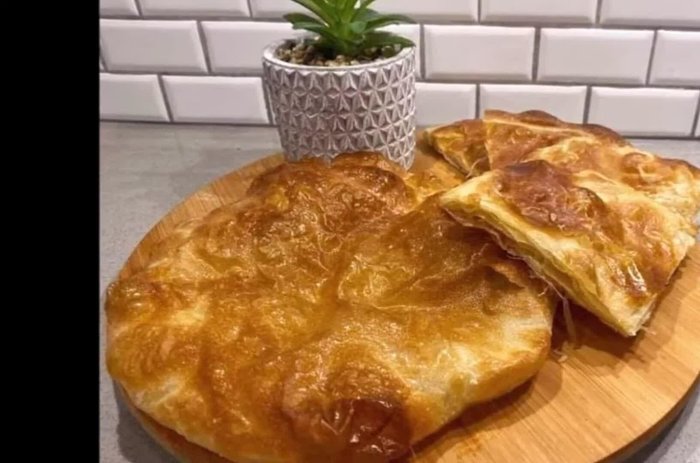Feteer Meshaltet, a beloved Egyptian pastry, is a culinary masterpiece of delicate, paper-thin layers, expertly crafted and generously drizzled with sweet syrup. This iconic dessert, with its intricate, almost lace-like appearance, is a testament to the artistry of Egyptian baking. The satisfying crunch of the layers combined with the rich sweetness makes it a truly unforgettable treat, perfect for special occasions or simply a delightful indulgence. Its mesmerizing beauty often makes it a centerpiece at celebrations, showcasing the pride and skill of the baker.
The seemingly complex process of creating Feteer Meshaltet is surprisingly achievable with careful attention to detail and patience. This recipe breaks down the technique into manageable steps, guiding you through each stage with clear instructions and helpful tips. Ready to embark on this rewarding baking journey and create your own stunning Feteer Meshaltet? Let's begin with the step-by-step instructions below!
Tools Needed
- Mixing bowl
- Oil plate
- Plastic wrap
- Baking sheet
- Aluminum foil
Ingredients
- Flour: 4 cups
- Sugar: 2 tablespoons
- Salt: 1/4 tablespoon
- Water: 1 and 1/3 cups (more if needed)
- Crisco or similar shortening: null
Step-by-Step Instructions
Step 1. Prepare and Rest the Dough
- Mix flour, sugar, and salt. Gradually add water until dough separates from the bowl. The dough should be soft and slightly sticky.
- Place the dough in an oiled plate, cover with plastic wrap, and let it rest for at least two hours (longer is better).


Step 2. Layer the Dough with Crisco
- Divide the dough into balls. Use melted Crisco on your work surface and the dough balls. Press and stretch each ball.
- Fold the first layer without any filling, using Crisco generously. Trim thick edges.
- Add subsequent layers, folding each one before adding the next. Use Crisco between each layer.



Step 3. Final Proof and Crisco Application
- Place the layered dough onto a baking sheet, cover with plastic wrap, and let it rest for 15-30 minutes.
- Spread Crisco on top of the dough.


Step 4. Bake to Golden Perfection
- Bake at 470°F (243°C) for 15 minutes, or until golden brown. Cover with aluminum foil to soften.

Read more: Emirati Chebab Pancakes: Authentic Arabic Breakfast Recipe
Tips
- The amount of water needed will depend on the type of flour used.
- Crisco (or a similar shortening) is key to the texture of the pastry.
- Three layers are ideal, but you can add more if you wish.
- Serve with white cheese, honey, black honey and tahini, or enjoy plain.
Nutrition
- N/A
FAQs
1. How long does it take to make Feteer Meshaltet?
The entire process, from dough preparation to baking and cooling, can take several hours. However, much of this time is passive (dough resting, syrup cooling). Active preparation time is approximately 1-2 hours depending on your skill level.
2. Can I use a food processor to make the dough?
While you can use a food processor to initially combine the ingredients, be careful not to over-process the dough. It's important to achieve a smooth but not overly elastic dough. Some manual kneading is usually recommended for best results.
3. What if my Feteer Meshaltet layers don't separate properly?
This usually happens if the dough is too thick, not rolled thinly enough, or isn't properly layered with butter/ghee. Ensure very thin layers and generous amounts of fat between them. Using a sharp knife or pizza cutter also helps create clean separation.
Creating Feteer Meshaltet is a rewarding experience, resulting in a visually stunning and deliciously flavorful pastry. The intricate layers and sweet syrup combine to create a truly unforgettable treat that's perfect for sharing with family and friends. So gather your ingredients, follow the steps, and enjoy the delicious fruits of your labor!
